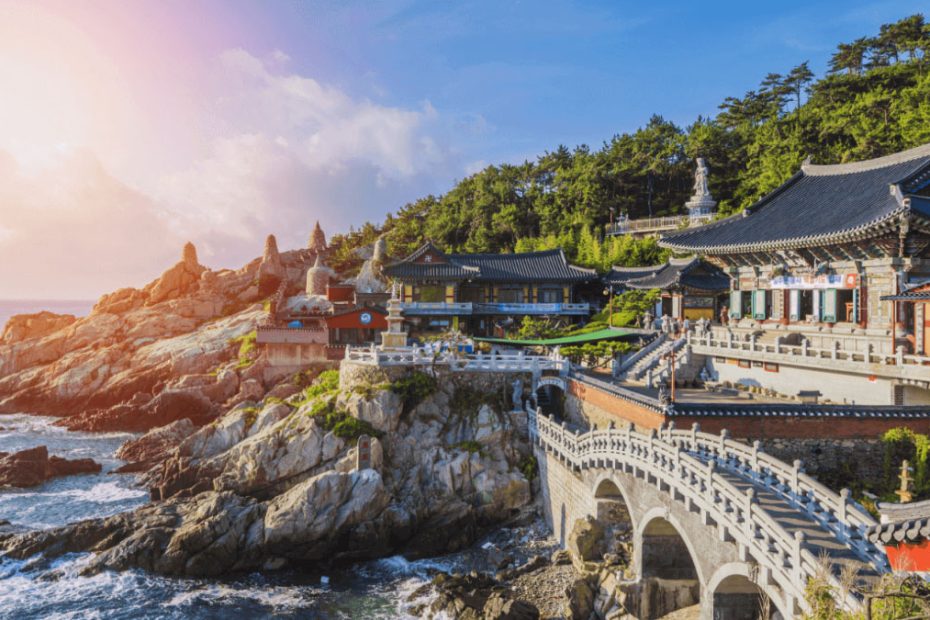Planning a trip to Korea can be overwhelming with so many incredible places to explore. From the bustling streets of Seoul to the serene temples of Gyeongju, Korea offers a perfect blend of modernity and tradition. I’ve crafted an 8-day itinerary that’ll help you make the most of your visit, ensuring you experience the best this vibrant country has to offer.
Whether you’re a foodie eager to try authentic Korean BBQ or a history buff fascinated by ancient palaces, this itinerary has something for everyone. Join me as I guide you through a journey filled with unforgettable sights, sounds, and flavors that will leave you longing for more.
Key Takeaways
- Comprehensive Itinerary: This 8-day itinerary covers a balanced mix of Korea’s vibrant cities, historical sites, and serene locations, ensuring a full experience of the country’s culture and attractions.
- Seoul Highlights: Explore the bustling streets of Myeongdong, visit iconic landmarks like Gyeongbokgung Palace and Bukchon Hanok Village, and enjoy cultural hubs like Insadong.
- DMZ Visit: Gain historical insights with a guided tour to the Demilitarized Zone, including the Third Tunnel of Aggression, Dora Observatory, and Dorasan Station.
- Experience Busan: Take the KTX train to Busan, relax at Haeundae Beach, and discover the cultural charm of Gamcheon Culture Village and Jagalchi Fish Market.
- Gyeongju Day Trip: Dive into Korea’s ancient history with visits to Bulguksa Temple and Seokguram Grotto, showcasing the country’s rich Buddhist heritage.
- Final Day in Seoul: Return to Seoul for shopping at Dongdaemun Design Plaza and enjoy panoramic city views from Namsan Seoul Tower before departing.
Day 1: Arrival in Seoul

Arriving in Seoul sets the stage for an exciting adventure. The city’s vibrant energy welcomes you immediately.
Check-in at Hotel
Choosing a hotel in Myeongdong guarantees easy access to shopping and dining. I recommend several top-rated hotels in this area:
- Tmark Grand Hotel Myeongdong
- MOXY Seoul Myeongdong
- L7 Myeongdong
- Metro Hotel Myeongdong
- Hotel 28 Myeongdong
Checking in at one of these hotels ensures you’re in a prime location. Myeongdong, known for its bustling streets and numerous shops, offers an excellent base for exploring. Each hotel provides comfortable accommodations and amenities to relax after long flights. Plus, airports are well-connected, so transferring to Myeongdong is straightforward.
Explore Myeongdong Night Market
Myeongdong Night Market is a bustling area full of vibrant street food, shopping, and entertainment. You can taste popular Korean street foods like tteokbokki (spicy rice cakes), hotteok (sweet pancakes), and odeng (fish cake skewers).
Shopping options include numerous skincare and cosmetics stores, perfect for beauty enthusiasts. I recommend visiting popular spots like Etude House and Innisfree for high-quality Korean products. Besides shopping, you can enjoy street performances and entertainment that make the night market experience richer.
Each visit promises unique experiences as vendors frequently introduce new products. Ending the day at Myeongdong Night Market captures the city’s essence, making it an excellent start to your Korean adventure.
Day 2: Discovering Seoul

On the second day, I explored the cultural heart of Seoul, delving into its rich history and vibrant local life.
Visit Gyeongbokgung Palace
I began my day at Gyeongbokgung Palace, one of Seoul’s largest and most iconic palaces. Designated as a UNESCO World Heritage Site, this palace serves as a remarkable window into Korea’s historical grandeur. The palace grounds are expansive, allowing me to wander and marvel at the traditional architecture and meticulously maintained gardens. The entrance fee is 3,000 won, which is quite reasonable given the palace’s historical significance. Guided tours are available, adding immense value to the visit by providing detailed insights into the palace’s history and significance. I found it fascinating to learn about the Joseon Dynasty and the various events that shaped Korean history.
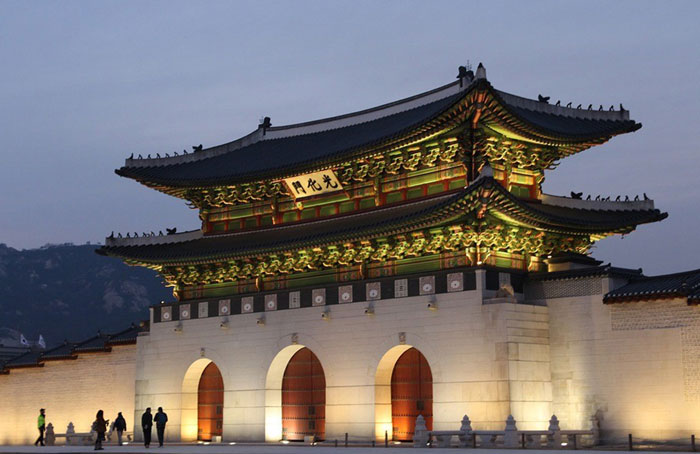
Stroll Through Bukchon Hanok Village
Just a short walk from Gyeongbokgung Palace, I ventured into Bukchon Hanok Village. This area is renowned for its traditional hanok houses, offering a picturesque contrast to Seoul’s modern skyline. Strolling through the narrow alleys, I felt transported back in time, surrounded by homes that have preserved their historical essence. The village offers not only a glimpse into folk architecture but also a deeper understanding of Korean cultural heritage. Many houses have been converted into cultural centers, guesthouses, and tea houses, allowing for an immersive experience. I enjoyed discovering small artisan shops and taking in beautiful views of the surrounding cityscape.
Enjoy Insadong Street
My evening was spent at Insadong Street, a lively area known for its blend of traditional and contemporary attractions. The street is lined with tea houses, street food stalls, and local shops selling everything from handcrafted souvenirs to traditional Korean clothing. This area is a hub for experiencing authentic Korean culture and cuisine. I sampled delicious street food, including tteokbokki and hotteok, while enjoying the vibrant atmosphere. Insadong Street is popular with both locals and tourists, making it a perfect spot for people-watching and soaking in the local flavor. The combination of historical sites and modern amenities made for a delightful and enriching evening.
Day 3: Day Trip to DMZ

On Day 3, I embarked on an unforgettable journey to the Demilitarized Zone (DMZ). This unique location, a crucial part of Korean history, offers a deep insight into the conflict and division between North and South Korea.
Tour DMZ Attractions
The day began with an early morning guided tour to the DMZ, an area that is both fascinating and historically significant. First, we visited the Third Tunnel of Aggression, discovered in the 1970s and believed to be a conduit for a North Korean invasion. The air was thick with history as I walked through this 1,635-meter-long tunnel, learning about its creation and purpose.
Next, the tour took us to the Dora Observatory. Positioned on Mount Dora, it provides a clear view into North Korea, including the infamous Propaganda Village. Through the high-powered binoculars, I observed the stark contrast between the two Koreas. The somber atmosphere at the DMZ allowed me to grasp the gravity of the Korean conflict.
The tour also included a visit to Dorasan Station. This symbolic railway station once connected North and South Korea and now serves as a poignant reminder of hopeful reunification. A knowledgeable guide provided detailed historical context, enhancing the experience.
Return to Seoul
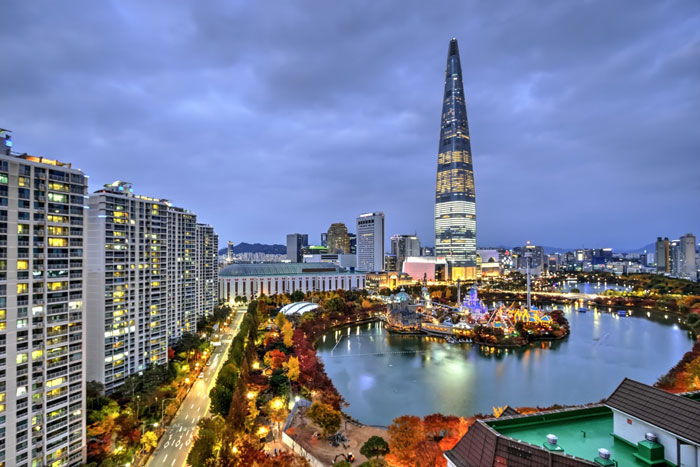
Returning to Seoul, I aimed to recharge and reflect on the day’s revelations. I headed to Myeongdong Kyoja for a late lunch. Known for its handmade noodles and dumplings, the restaurant offered a delightful culinary experience. The kalguksu (knife-cut noodles) and mandu (dumplings) were particularly memorable, providing a delicious and comforting meal.
As evening approached, I attended a performance at the Seoul Myeongdong Nanta Theater. Nanta, a non-verbal show, combined traditional Korean rhythms with modern music and comedic elements. The high-energy drumming and visual storytelling were captivating and offered an entertaining end to the day.
After the show, I dined at Jungsik, a Michelin-starred restaurant renowned for its innovative Korean cuisine. The tasting menu featured creative dishes that skillfully blended traditional flavors with modern techniques. Each course was a testament to the chef’s artistry, making Jungsik a fantastic choice for a sophisticated dining experience.
This day trip to the DMZ, coupled with cultural and culinary delights back in Seoul, made Day 3 an enriching and memorable part of my Korean adventure.
Day 4: Journey to Busan

Take KTX to Busan
Taking the KTX train from Seoul to Busan, which takes about 3 hours, ensures a swift and comfortable trip. Booking tickets in advance is recommended for better seating options. The journey offers scenic views of the Korean countryside, enhancing the travel experience. Departure is from Seoul Station and arrival is at Busan Station, both easily accessible by public transport. The KTX is known for its punctuality and efficiency, making it an optimal choice for intercity travel in Korea.
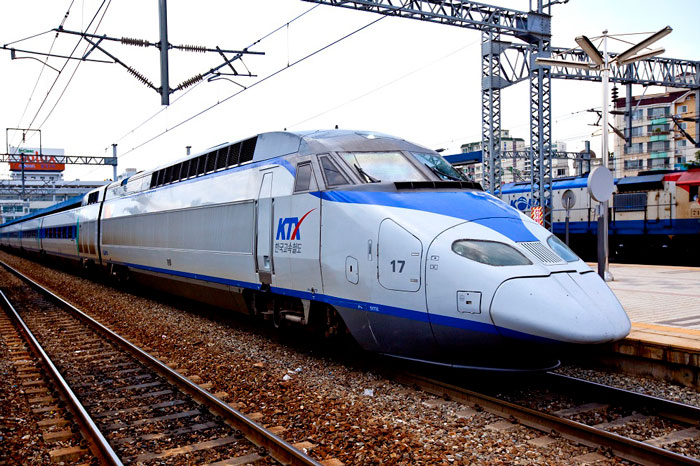
Explore Haeundae Beach
Haeundae Beach, one of Busan’s iconic locations, promises a day of relaxation and exploration. The gentle waves and soft, golden sand make it perfect for a leisurely beach day. Walking along Gunam-ro, the main road bordering the beach, reveals a variety of shops, cafes, and restaurants. It’s also home to Haeundae Blueline Park, where a stroll along the beach pathway offers stunning coastal views. Staying at a nearby hotel like MS Hotel Haeundae provides both convenience and comfort.
Day 5: Explore Busan

Busan’s diverse attractions offer a rich cultural experience. Begin the day by visiting Gamcheon Culture Village.
Visit Gamcheon Culture Village
Gamcheon Culture Village, often called the “Santorini of the East,” is known for its vibrantly painted houses and intricate street art. Originally a humble mountainside neighborhood, it has transformed into a creative community filled with art installations, galleries, and quaint cafes. Wander through the maze-like alleys and discover murals, sculptures, and panoramic viewpoints. The village also offers workshops and hands-on experiences, such as pottery and local crafts, letting visitors connect more deeply with Korean culture.
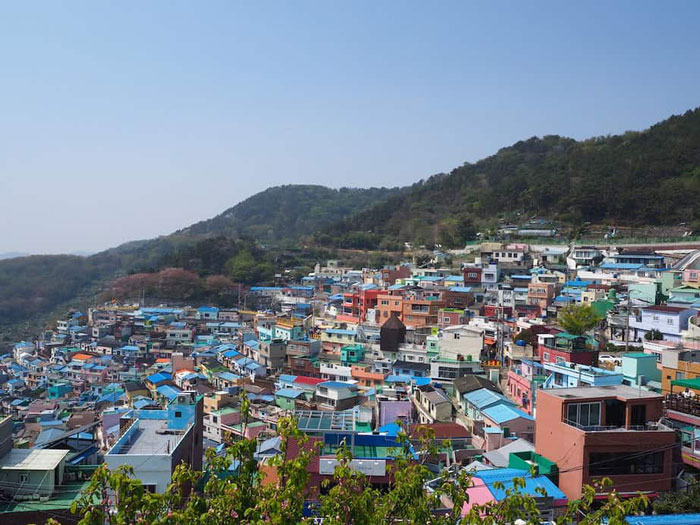
Tips for Visiting:
- Wear comfortable shoes due to uneven pathways.
- Visit the tourist information center for a map to navigate hidden spots.
- Try local snacks from street vendors for an authentic taste.
Jagalchi Fish Market
Jagalchi Fish Market is South Korea’s largest seafood market, located near Nampo-dong. It’s famous for its vast array of fresh fish, shellfish, and other marine delicacies. The market’s bustling atmosphere offers a look into Busan’s fishing culture. Walk through the aisles and see live fish, giant octopuses, and exotic species on display. Many vendors provide seafood dining experiences where you can select your seafood and have it prepared on-site. This market is a must-visit for seafood lovers and those wanting to experience local culinary traditions.
- Visit early in the day to see the freshest catches.
- Bargain politely for better prices, especially when buying in bulk.
- Head to the second floor for seafood restaurants that cook your market purchases.
Connecting these two iconic experiences allows for a full day’s exploration of Busan’s unique charm and culinary heritage.
Day 6: Gyeongju Day Trip

On Day 6, I experienced a culturally enriching day trip to Gyeongju, focusing on two significant historical landmarks: Bulguksa Temple and Seokguram Grotto.
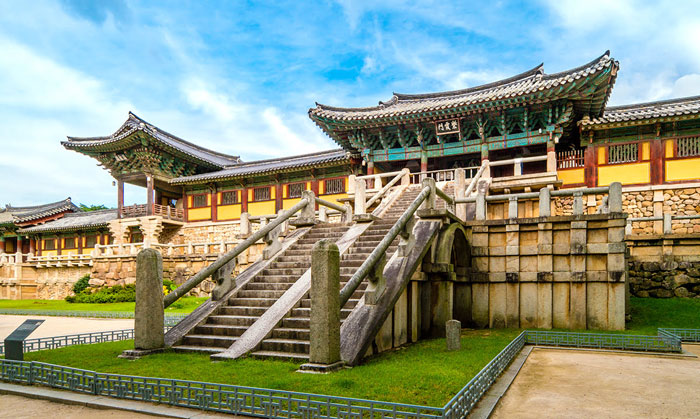
Bulguksa Temple
Bulguksa Temple, located at 385 Bulguk-ro, Gyeongju-si, Gyeongsangbuk-do, stands as a timeless monument of Korean Buddhism. Operating from 9:00 to 18:30, with the last admission at 17:30, the temple offers visitors free entry starting from May 4, 2023.
To reach Bulguksa Temple, I traveled from Gyeongju Station using Bus# 711, which took about 47 minutes. Alternative options include Bus# 700 (55 mins), Bus# 50/51/70/710 (18 mins) with a transfer to Bus# 11 (34 mins), Bus# 10 (42 mins), or Bus# 711 (29 mins). After alighting at the Bulguksa Temple stop, a 12-minute walk led to the main entrance.
The temple showcases stunning architectural features like the Dabotap and Seokgatap pagodas. Exploring the temple grounds, I admired intricate stone carvings and serene ponds. The temple’s history dates back to 528 AD, yet it remains well-preserved, providing a glimpse into Korea’s rich cultural heritage.
Seokguram Grotto
Seokguram Grotto, another gem in Gyeongju, sits at 873-243 Bulguk-ro, Gyeongju-si, Gyeongsangbuk-do. This UNESCO World Heritage site is renowned for its tranquil ambiance and the grandeur of its stone Buddha statue.
From the Bulguksa Temple bus stop, I took Bus# 12 and alighted at Seokguram Parking Lot stop. A 12-minute walk led me to the entrance of the grotto. The journey offered scenic views of the surrounding mountains, enhancing the overall experience.
Inside the grotto, the magnificent Buddha statue, seated in the bhumisparsha mudra, commands awe. The statue’s serene expression and intricate detailing make it a masterpiece of East Asian art. Built in the 8th century during the Unified Silla period, the grotto also features depictions of bodhisattvas, deities, and guardians, testifying to the artistry and craftsmanship of that era.
Day 7: Return to Seoul

After an enriching cultural experience in Busan and Gyeongju, I returned to Seoul for more exploration. Seoul, with its dynamic blend of tradition and modernity, offers countless attractions.
Shop at Dongdaemun Design Plaza
I started my day by heading to Dongdaemun Design Plaza (DDP). Renowned for its futuristic architecture and urban development, DDP is a hub for fashion, culture, and design. Inside, I found a mix of retail stores and exhibition spaces. The design market featured items from local designers, offering unique and contemporary Korean fashion, accessories, and home decor.
DDP’s LED rose garden was a highlight, with thousands of illuminated roses creating a mesmerizing visual experience. The plaza also hosted various events and exhibitions, providing insights into Korea’s creative industry. I spent hours exploring the different zones, each offering something new and exciting. The Art Hall and Design Lab were particularly fascinating, showcasing innovative installations and artworks.
Shopping at DDP was an exhilarating experience. The diverse stores catered to various tastes, from high fashion to quirky souvenirs. After shopping, I enjoyed a coffee at one of the trendy cafes, soaking in the vibrant atmosphere.

Enjoy a Namsan Seoul Tower Visit
After my shopping spree, I made my way to Namsan Seoul Tower. Positioned atop Namsan Mountain, the tower offers panoramic views of Seoul. I took the cable car up the mountain, which provided stunning views of the cityscape.
At the base of the tower, I found the “Locks of Love,” where couples leave padlocks as symbols of their affection. This area was bustling with visitors, all eager to capture the picturesque surroundings.
I ascended the tower to the observatory, which offered a 360-degree view of Seoul. The vista was breathtaking, especially as the sun began to set, casting a golden hue over the city. Within the tower, there were restaurants and cafes where I could relax and enjoy the view.
Visiting Namsan Seoul Tower was a memorable experience. The combination of the scenic cable car ride and the expansive city views made it an ideal spot to appreciate Seoul’s beauty.
Day 8: Departure

Last-minute Shopping
On my final day in Korea, I made sure to maximize my time by indulging in last-minute shopping. I started with Insadong, known for its wide array of traditional Korean crafts and souvenirs. I picked up some beautiful Hanji paper items and ceramic tea sets.
Following that, I headed to Hongdae, a vibrant area famous for its street performances and trendy boutiques. I found unique apparel from local designers and some cool K-pop merchandise that I couldn’t resist. Hongdae’s youthful energy made it a perfect spot to soak in Korea’s modern culture one last time.
Finally, I visited Insadong’s nearby Ssamziegil, a multi-story shopping complex with a spiral walkway filled with quirky shops and artisan crafts. Here, I wrapped up my shopping spree with some handmade jewelry and Korean skincare products.
Head to the Airport
With my shopping bags in tow, I made my way to Incheon International Airport. I used the AREX (Airport Railroad Express) for a fast and convenient transfer from Seoul Station. The non-stop express train took just 43 minutes, providing a relaxing end to my trip.
Upon arriving at the airport, I checked in my luggage and proceeded through security. Incheon Airport, one of the best in the world, offered plenty of amenities. I decided to spend my remaining time exploring the airport’s facilities.
I visited the airport’s Cultural Museum for a final taste of Korean history and then relaxed in one of the many lounges available. As my flight’s departure time approached, I grabbed a bite at one of the international food courts, reminiscing about the incredible experiences of the past eight days. Boarding my flight, I took one last look at the vibrant and beautiful country of Korea.
Conclusion
Reflecting on my eight days in Korea, I can’t help but marvel at the incredible blend of tradition and modernity this country offers. From the bustling streets of Seoul to the serene temples of Gyeongju, every moment was filled with unique experiences and unforgettable sights. Shopping at Dongdaemun Design Plaza and Insadong allowed me to bring a piece of Korea home, while the panoramic views from Namsan Seoul Tower left me in awe of the city’s beauty.
As I boarded my flight at Incheon International Airport, I felt a deep sense of satisfaction and gratitude for the memories created. Korea’s rich culture, vibrant cities, and welcoming people made this journey truly special. Whether you’re a history buff, a foodie, or a shopaholic, Korea has something for everyone. This itinerary is a perfect blend of adventure, relaxation, and cultural immersion, making it an ideal guide for anyone planning their own Korean adventure.
Frequently Asked Questions
What are the highlights of Day 7 in Seoul?
Day 7 includes a visit to Dongdaemun Design Plaza (DDP) for shopping and seeing the LED rose garden, followed by a trip to Namsan Seoul Tower with panoramic views, a cable car ride, and the “Locks of Love” area.
What can I see at Dongdaemun Design Plaza (DDP)?
At DDP, you can explore local designer shops, enjoy the beautiful LED rose garden, and view innovative installations and artworks in Art Hall and Design Lab.
How do I get to Namsan Seoul Tower?
You can reach Namsan Seoul Tower via a cable car ride, providing a scenic view on your way to the top.
What can I do at Namsan Seoul Tower?
At Namsan Seoul Tower, enjoy panoramic city views, visit the “Locks of Love” area, ascend to the observatory for breathtaking views, and dine at the tower’s restaurants.
What is the focus of Day 8 of the itinerary?
Day 8 focuses on last-minute shopping in Insadong for traditional crafts and Hongdae for trendy boutiques and K-pop merchandise, wrapping up at Ssamziegil in Insadong.
Where can I buy traditional Korean crafts in Seoul?
Insadong is the perfect place to buy traditional Korean crafts and souvenirs, with many shops offering unique artisan items.
What is special about Ssamziegil in Insadong?
Ssamziegil is a popular multi-level shopping complex in Insadong, known for its artisan crafts, souvenirs, and unique architectural design.
How do I get to Incheon International Airport from Seoul?
You can take the AREX (Airport Railroad Express) for a convenient and quick transfer from Seoul to Incheon International Airport.
What can I do at Incheon International Airport before my flight?
At Incheon International Airport, you can explore the Cultural Museum, relax in lounges, and enjoy various amenities before boarding your flight.
How long is the entire Korean itinerary?
The entire Korean itinerary spans eight days, covering highlights in Seoul, Busan, and Gyeongju.

